Rasps seem to be under-appreciated in the woodworking world. They have a somewhat medieval appearance, lacking the outward elegance of a fine spokeshave. Some of us have had unpleasant experiences with cheap rasps that may have lead to the erroneous conclusion that this genre of tool is good for nothing more than hacking at the corners of a home DIY plywood project.
Au contraire, the hand cut rasps made in France by Michel Auriou and his small group of highly skilled craftsmen are magnificent tools capable of bringing the finest sensitivity to shaping wood. They must, of course, be well cared for, and this includes cleaning. The cove-like teeth will naturally clog as have the #9 and #13 grain rasps (left and right, below) while shaping mahogany. There are two stages to cleaning them.
The Tools for Working Wood catalog transmits Michel’s advice to clean the rasps with a natural bristle brush since any metal brush, even brass, will eventually dull the teeth. I use and like the small natural hog brush sold by TFWW. I angle the bristles of this little brush toward the coves of the teeth and use vigorous circular and side-to-side motions to get the rasps adequately clean during a work session, as seen below. However, this does not completely remove the embedded wood, especially in the finer rasps. I do not want to repeatedly store them in this condition since eventually more teeth will become clogged, reducing the effectiveness of the tool.
A close up view of the #13:
Here’s my solution. I get several drops of CMT 2050 (widely available at woodworking suppliers) on the rasp, spread it with my finger, and half a minute later brush it with the hog bristle brush. Voila! The previously stubborn embedded wood easily disappears and, after patting them dry as necessary, the clean rasps (bottom photo) are ready to be put away and await their next duties in perfectly ready shape.
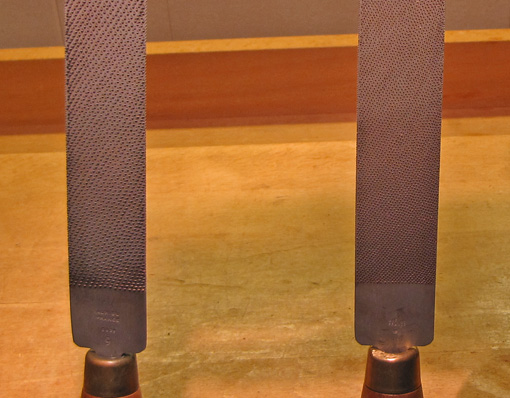
CMT 2050 is a non-toxic solution with a pH of 9.5-10.5 (MSDS) and rust preventive properties. No rinsing is required. After using this method on Auriou and Nicholson rasps for at least a year, I have not found any rusting or undue dulling. Since I would not want to suggest to my readers a method that might do any harm to these valuable tools, I checked with Michel Auriou to see if this method was safe for his rasps. He graciously answered my inquiry and stated “I think there is no risk to the use of that product.” Knowing the excellence of his tools and having had the awe-inspiring experience of watching Michel stitch (cut) the teeth on a rasp at a Lie-Nielsen Hand Tool Event a few years ago, I will take the advice of this superb craftsman.

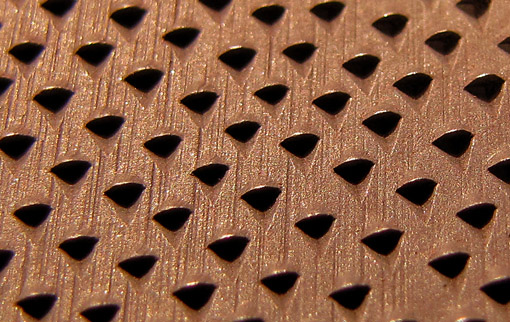
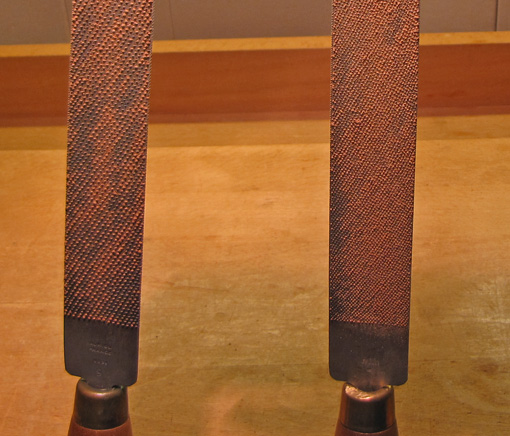
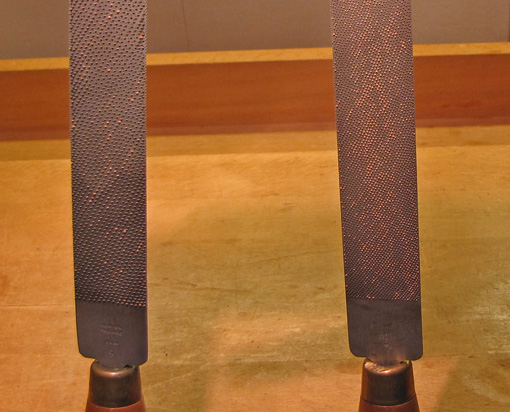
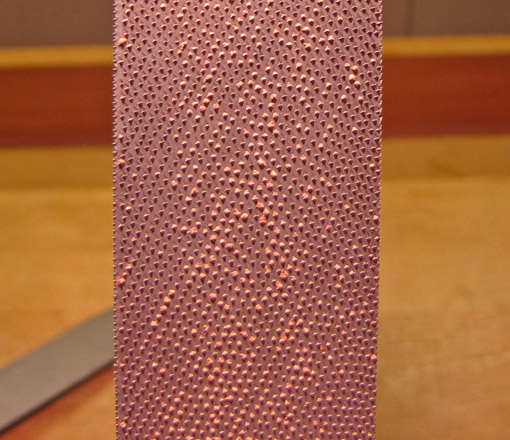
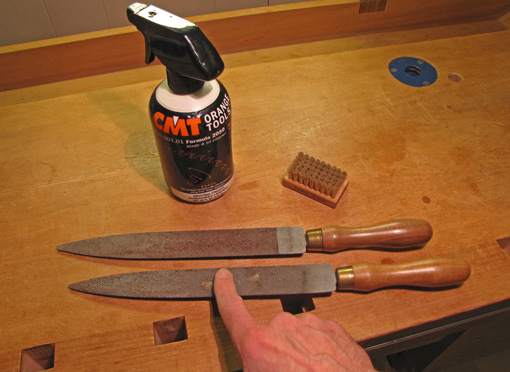

Great post, Rob. I own just one Nicholson rasp and it has worked great for years. When I got it I my appreciation for rasps changed at once. It is actually a precision tool. The same will undoubtedly happen when I get an Aurio, something that’s been on my wish list for a long time.
Also, it’s really nice to know about the CMT 2050. Looks like a useful product.
On files like mill bastard files I sometimes use the wire brush which is on the flip side of my bristle brush. Is that not recommended?
Best,
Tico
Hi Tico,
The Nicholson #49 and #50 are very good rasps, the Aurious are great rasps. If you have a #49 or #50, an Auriou 13 grain would be a nice next step on most woods.
CMT 2050 works well on any metal tool to remove pitch – table saw and band saw blades, router bits, etc. Non-toxic (you can get it on your hands) and no rinsing required!
Since mill files are used on metal, I use a brass brush, in a side-to-side motion, to clean them.
Rob
By the way, Heartwood readers, Tico’s started up a new blog at
http://www.ticovogt.com/?p=106
The first two posts, and no doubt more on the way, deal with a topic we all can relate to, which is how he came to be a woodworker. I guess each of us has his own story. I commend Tico’s writings to you.
Rob
Thanks for the great cleaning tip, Rob. I’ve been having the same issue with trying to keep my two Aurious clean.
And just to second your thoughts on these rasps, using an Auriou for the first time was like using a properly tuned plane for the first time—it completely changed the way I work/think/feel. I realized a rasp could be a precision cutting instrument and not just “abrasive on a stick.”
George
Thanks, George. Your analogy is a good way to explain the value of Aurious to someone who hasn’t used them and is considering a purchase.
Rob
Great advice as I just purchased two Nicholson files and didn’t know how to deal with clogging. Thanks for the tip.
Steve,
You’ll probably be mostly OK cleaning the files with a brass brush but CMT 2050 will get the stubborn stuff. But for cleaning expensive hand-cut rasps, like the Aurious, avoid using a metal brush and go with the method described in the post.
Rob